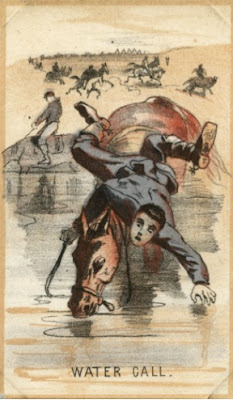Saul Steinberg was a Romanian-born, American cartoonist. His artwork delves into many styles, techniques, and mediums with the purpose of comic relief from the seriousness (and absurdity, as he might suggest) of typical, everyday life. Most renowned for his New Yorker cover artwork, Steinberg stretched far and wide in artistic success.
Steinberg was born on June 15, 1914 in Romania, but soon moved to Bucharest where his father owned a printing shop and manufactured boxes. After high school, he studied philosophy at the University of Bucharest before moving to Italy where he would study architecture. It is here that he first began his work as a cartoonist--doing satirical artwork for Bertoldo, an Italian magazine. However, during his time in Italy, Steinberg, being Jewish, was placed into an Italian concentration camp until his New York agent acquired a Dominican Republic visa.
Steinberg thus lived in the Dominican Republic--where he first began drawing for the New Yorker and a few other American magazines. He obtained his U.S. citizenship after being recruited into the U.S. Naval Reserve in the Office of Strategic Service. This job sent him to China, India, North Africa, Italy, and Washington, and in each place, his focus was creating political propaganda that was illustrated to appear as if there were a German Resistance. In this time, he continued to create drawings for the New Yorker of military life in these various countries.
In 1944, Steinberg married painter Hedda Sterne and built a social life full of artistic geniuses like himself.
The culmination of Steinberg's past led him to be an artist that relied purely on images on paper to relay his witty messages and commentary. He referred to himself as "a writer who draws," but many artists believed that he could also have been considered "an artist who writes," because his artworks held such clear messages without so much as a single word on the page.
 |
| View From 9th Avenue, 1976. Ink, pencil, colored pencil, and watercolor on paper. |
 |
| Untitled (Rush Hour), c. 1969. Rubber stamps in black ink, and pen and black ink, over graphite, on ivory wove paper. |
 |
| Not Yet, 1965. Watercolor with colored pencil, pen and black ink, and graphite, with black chalk and rummer stamp in black in, ruled in back chalk and graphite, on off-white wove paper. |
Another example of Steinberg's word drawings:
 |
| I Do I Have I Am, 1971. Pen and black ink, colored crayon, and watercolor, over graphite, with colored fiber-tipped pens and oil over cut-and pasted white wove paper, on ivory woven paper. |
 |
| Breakfast Still Life, c. 1974. Graphite, with erasing, and black and colored pencil and crayon on white wove paper. |
This is by no means an all-encompassing post of Steinberg's work. His work varied so widely and he has such a vast collection of pieces that it would be hard to concisely incorporate them all. These images are simply what I found to be key (and some of the most interesting) pieces in his collections.
Fun Fact: By the end of his life, Steinberg could speak five languages: Romanian, German, Spanish, French, and Italian.
Sources:
- Saul Steinberg Foundation
- Rush Hour
- Not Yet
- I Do I Have I Am
- Breakfast Still Life
- Ware, Chris and Mark Pascale. Along The Lines. The Art Institute of Chicago, 2017.











